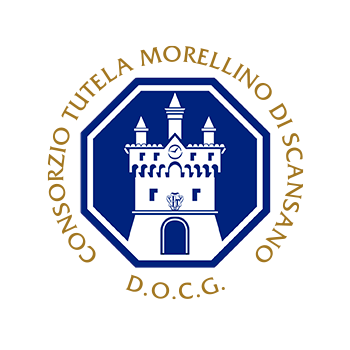The production area of Morellino di Scansano covers approximately 65,000 hectares of land in the southwest of the province of Grosseto, the southernmost area of Tuscany. The area covered by the vineyards includes hills and foothills sloping south from the north and the east towards the plain of Albinia and westward to the Tyrrhenian coast and the plain of Grosseto. With this exposure, the area is protected from the cold north winds, and open to the temperate sea breezes.

Climate and Geology
Wind and soil, a unique combination
CLIMATE
The average temperature is around 15°C, with averages of 7°C in winter months and 24°C in summer. July is generally the hottest month in which absolute maximum temperatures of between 38°C and 39°C occur almost every year; absolute minimum temperatures below 0°C occur rarely, with minimum peaks between -7°C and -8°C only recorded in the middle of winter and for brief periods of time. The wide temperature range between day and night during the summer and autumn is one of the key factors in the balanced ripening and concentration of the grapes.
GEOLOGY
Geology in the area is varied, and corrisponds to the formation of different soils. There are two main types of soil: sandstone on the western part, more uniform, limestone and clay on the eastern part, more complex. Soils are not deep, with rocky substrates that often emerge.
The production area of Morellino di Scansano covers approximately 65,000 hectares of land in the southwest of the province of Grosseto, the southernmost area of Tuscany. The area covered by the vineyards includes hills and foothills sloping south from the north and the east towards the plain of Albinia and westward to the Tyrrhenian coast and the plain of Grosseto. With this exposure, the area is protected from the cold north winds, and open to the temperate sea breezes.
CLIMATE
The average temperature is around 15°C, with averages of 7°C in winter months and 24°C in summer. July is generally the hottest month in which absolute maximum temperatures of between 38°C and 39°C occur almost every year; absolute minimum temperatures below 0°C occur rarely, with minimum peaks between -7°C and -8°C only recorded in the middle of winter and for brief periods of time. The wide temperature range between day and night during the summer and autumn is one of the key factors in the balanced ripening and concentration of the grapes.
GEOLOGY
Geology in the area is varied, and corrisponds to the formation of different soils. There are two main types of soil: sandstone on the western part, more uniform, limestone and clay on the eastern part, more complex. Soils are not deep, with rocky substrates that often emerge.

